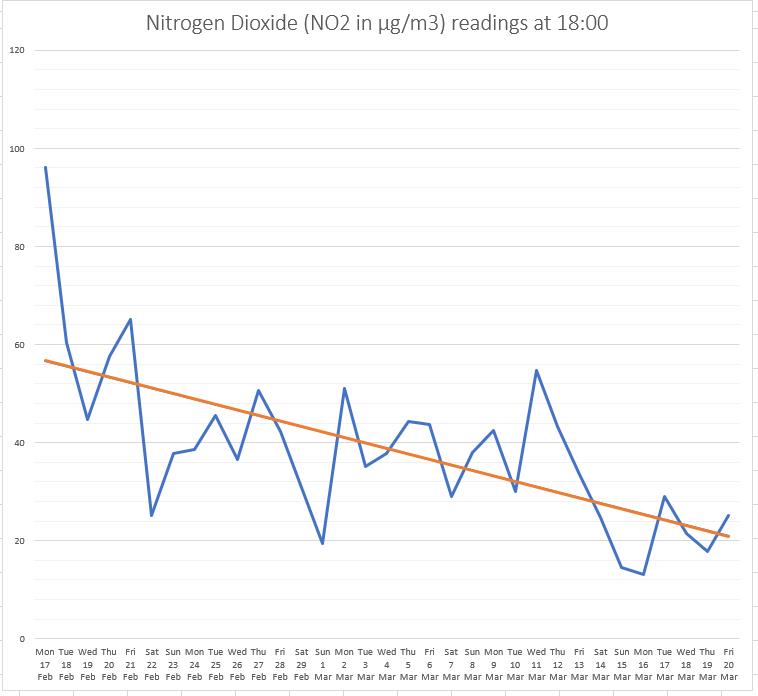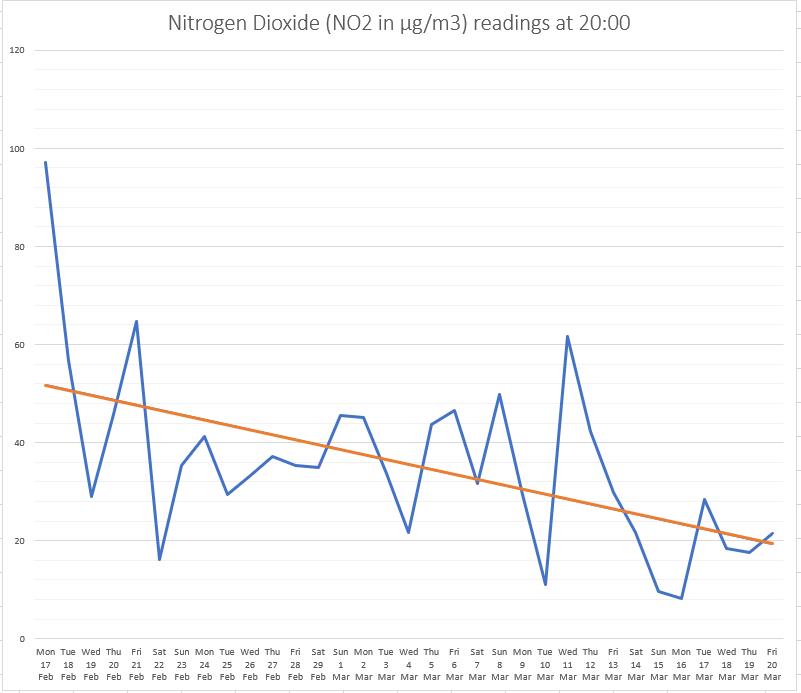Measures to stop the spread of Coronavirus and the encouragement for people to stay at home correlate with a big decrease in air pollution in the country, data analysed by The Malta Independent on Sunday shows.
The past week or so have seen a variety of measures introduced by the government in tandem with health authorities which restrict outdoor activity and social gathering in an attempt to slow the spread of Coronavirus.
Schools have been closed; workplaces have been encouraged to introduce teleworking systems; entertainment and catering outlets have been shut; inbound flights, as of Saturday, have been stopped; and health authorities continue to urge people to remain indoors unless absolutely necessary.
The measures will no doubt have a negative effect on the country’s economy but, in an embodiment of the well-known adage “every cloud has a silver lining”, the measures are also having a positive effect on Malta’s air quality.
Data taken from the Environment & Resources Authority (ERA)’s air monitoring station in Msida – usually one of Malta’s busiest junctions – shows a significant decrease in pollutants which are traditionally associated with car use.

Chief amongst those pollutants is Nitrogen Dioxide (NO2) – a pollutant which, according to the World Health Organisation, comes from “power generation, industrial and traffic sources”, and which is being increasingly linked to bronchitis, asthma, and respiratory infections which affect both the heart and lungs.
An analysis of the ERA’s data shows that in the morning rush-hour period between 17 February and 20 March there has been an absolute decrease from a peak of 136.183 micrograms per cubic metre (ug/m3) on the former to one of 38.2 ug/m3 on the latter – equivalent to 71.94%.
Further analysis points towards an average day-to-day decrease in of 1.69 ug/m3 daily between 17 February and 20 March in this morning time-slot.

The pattern is similar when taking the data registered at two other specific times – 18:00 and 20:00. The absolute decrease between the aforementioned dates for the 18:00 timestamp is noted to be 73.75%, while the same absolute decrease for the 20:00 timestamp is 77.95%.
The average day-to-day decrease between the two dates was of 1.13 ug/m3 for the 18:00 timestamp, and 1.09 ug/m3 for the 20:00 timestamp.
While it must be noted that in the case of the 18:00 and 20:00 timestamps the data on Monday 17 February is the peak for the whole period taken, calculating the 5-day week average for each of the five weeks analysed shows a similar pattern of decrease – and leads us to the conclusion that the decrease did come about due to measures introduced by the government.
Indeed, the average emissions of Nitrogen Dioxide registered at the three timestamps taken between 16 and 20 March was far less than the average emissions registered in the previous four weeks.

For instance, while the average readings for the four weeks preceding last week between 07:00 and 08:00 stood at around the 80 ug/m3 mark – the five-day average taken for last week shows a staggering drop to an average of 25.938 ug/m3 – a drop of 68% in the space of a week.
The same pattern is evident for the other two timestamps – with emissions decreasing by 48% between last week and the week before at 18:00, and by 46% at 20:00.
The environmental silver lining that the outbreak of Coronavirus has brought about across the world has been well documented.
The European Union’s Space Agency's earth-observation satellites earlier this week reported that they had detected a significant reduction in nitrogen dioxide in northern Italy – in line with drastic measures that the country has taken to stop the spread of the virus.

The agency’s Copernicus Atmosphere Monitoring Service reported on Tuesday that with the “abrupt changes in activity levels” in northern Italy, it had tracked a “reduction trend” of nitrogen dioxide for the last four to five weeks.
Researchers, similarly, found a 20 to 30% decrease in surface particulate matters over huge swathes of China – where the viral outbreak first began.
Researchers in New York also shared early results which showed that carbon monoxide emissions in the city, stemming mainly from cars, had been reduced by nearly 50% compared with last year.
With no end to the crisis in sight, and with aviation grinding to a halt and millions of people now working from home, a range of emissions across many countries – including Malta – are likely to follow the same downward path for a while yet.